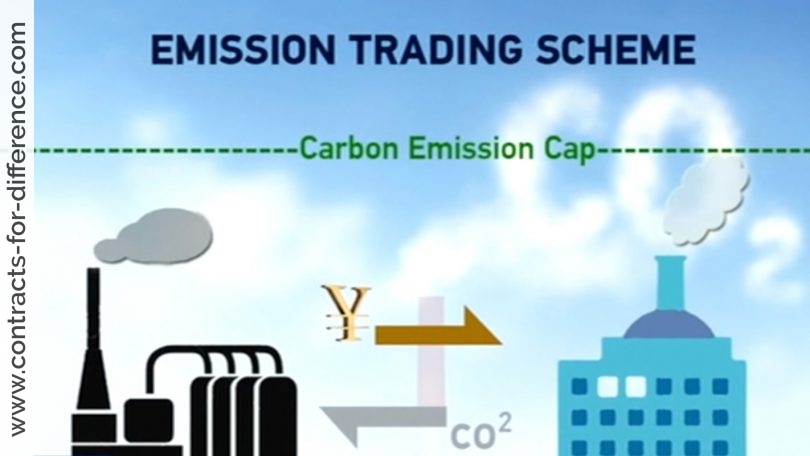Carbon trading also referred to as emissions-trading has become a hot topic in recent months, particularly with the World Climate Conference in Copenhagen. And not all may be aware but there is now an emerging market in carbon derivatives and CFD traders are already speculating on future carbon emission values. It is a market which is very much in its infancy, and some find it difficult to understand. The proposed programs allow emitters of carbon pollution to release a certain amount of the gas, for which they receive a permit. These permits can be bought and sold, allowing a polluter who improves their performance to sell spare credits and receive money for the reduction achieved. This creates a financial incentive against which to offset the cost of implementing the improvement. The basic premise is that heavy polluters are thus forced to acquire expensive permits for the right to keep polluting while those who manage to reduce their carbon footprint are able to sell on excess permits to those who failed to do so.
Current technology costs a lot to achieve any improvements. A Vice President at Shell Oil recently estimated the cost to be about US$100 (about €72) per ton of carbon dioxide eliminated, which means the economic feasibility of reduction is in question. Nonetheless, carbon dioxide permits issued by the European Union for December 2009 were valued at €13.5 per ton on the European Climate Exchange in London.
And of course carbon trading is not limited to those companies who actually need them. i.e. coal and heavy oil fired power stations, electric utilities, steel manufacturers, aluminium smelters..etc – speculators participating in the futures markets also get into the equation.
How does a trading scheme work? – Emissions trading is a market-making system created to for improvement in the general environment. The regulators first determine acceptable emission levels and then divide this total into tradeable units (commonly referred to as credits or permits). These credits are subsequently allocated to participants in the scheme. The parties that manage to reduce emission levels end up with surplus units which they can then sell to others that don’t manage to cut emission levels.
Who is getting into this market? – Big investment banks such as Goldman Sachs, Barclays and JPMorgan have all been mentioned – and these are scarcely companies with a need to buy credits in the never-ending effort to save mankind from the global warming apocalypse. The global carbon market is now already worth US$144 billion.
Which countries are involved? – Carbon trading has been introduced in the European Union and to some extent in New Zealand. California plans to start in 2013 and South Korea is likely to follow in 2015.
Who will end up paying for most for the carbon permits? – The end consumer. Polluters will seek to pass on such costs.
There is no doubt that it is a volatile and politically involved market, as the price of carbon emissions as given by the ECX EUA futures contract has varied all the way between €8 and €30 per ton in the past couple of years. But if a commodity has a linked futures market, a CFD market can be made. ‘If there’s a futures market on carbon credit – and people want to trade it, we’ll be offering it,’ says Chris Weston, an institutional dealer at IG Markets in Melbourne. And one broker, Saxo Bank, based in Copenhagen, has seen this as an opportunity to launch a CFD product based on the futures market to allow traders to speculate easily on future emission values.
The standard size contract offered is for 25 metric tons, or tonnes, which is slightly less than the annual emission from a typical household for all their energy uses. The contract for difference allows you to profit whether the emission cost goes up or down. If you think that emissions will be increasing over the next year, and that increased demand will lead to higher prices, then you would buy a contract to take a long position.
As an example, the carbon emission CFD may be trading at €12.69 to €12.80. This is the price per tonne. The minimum you can trade would be 25 tonnes, or 25 times this amount, which is €317.25 to €320. To go long, you will pay €320, and Saxo require a 10% margin for this contract, so the initial outlay would be €32.
If the market rises to €13.69 to €13.80 then the value of the contract when you sell it will be €13.69 x 25, which is €342.25. Your profit on an outlay of €32 would be €22.25. As with all CFDs, the dealer, Saxo Bank in this case, makes its profits from the spread between the buying and selling prices.
As this is a very recent CFD, there is not much of a track record on which to base your trading. The fundamentals would seem to favor a long position, but with so little experience in the field it is difficult to anticipate the future direction of the CFD. The price of carbon emissions has tended to follow energy costs, so if you believe that energy prices are bound to rise, that may give you a further indication of the direction to trade.







